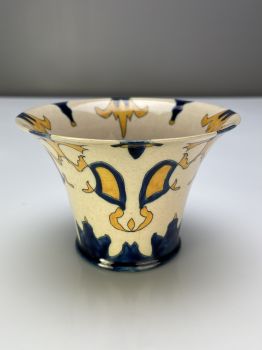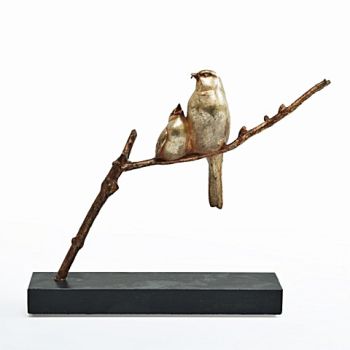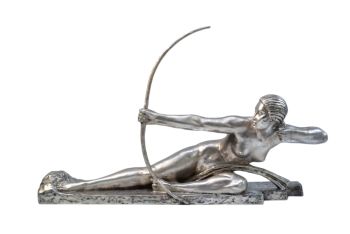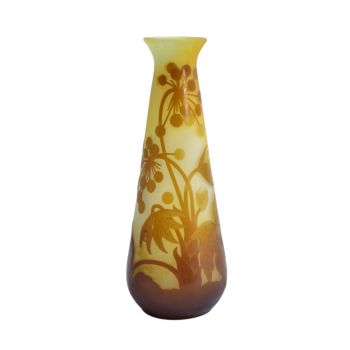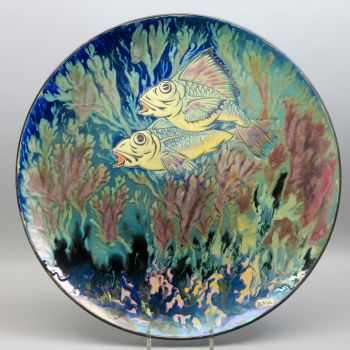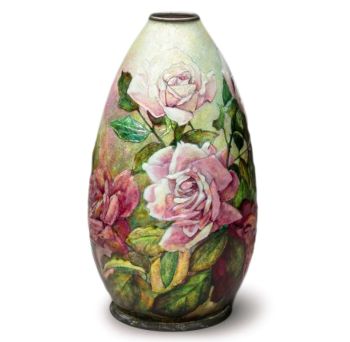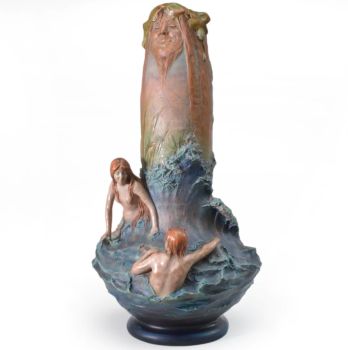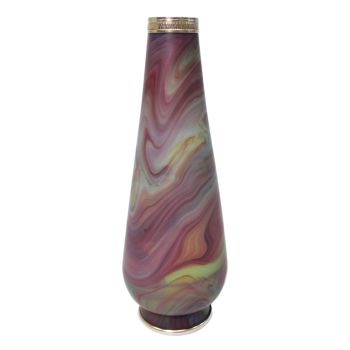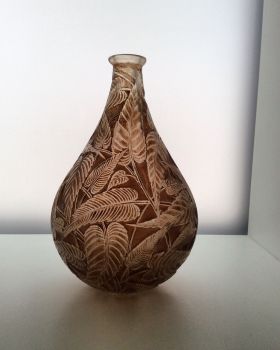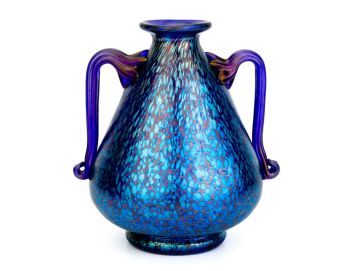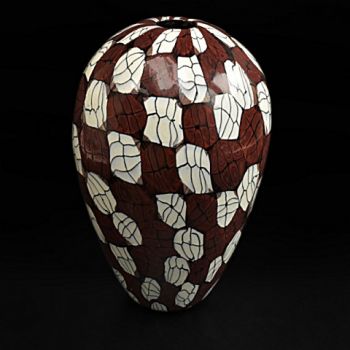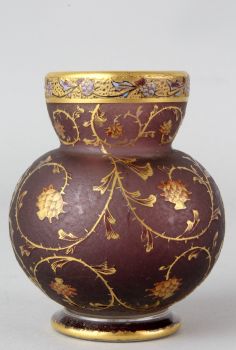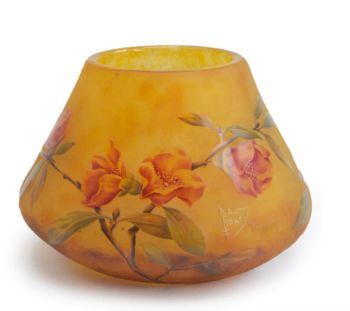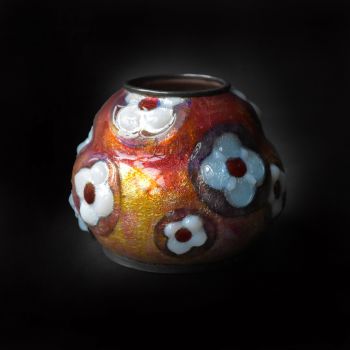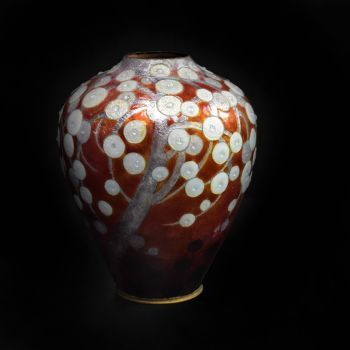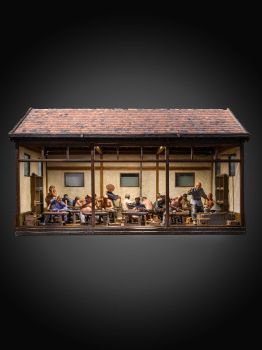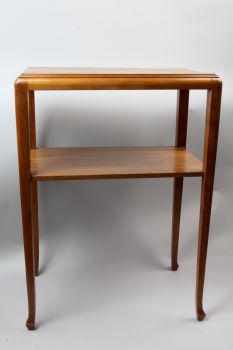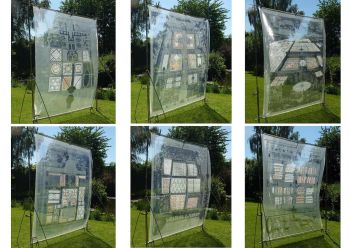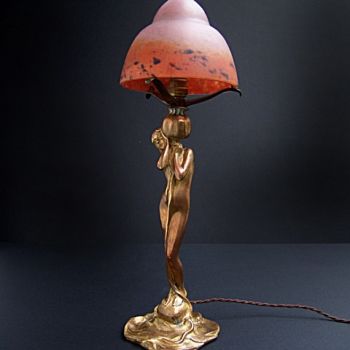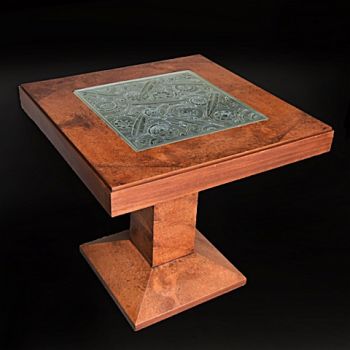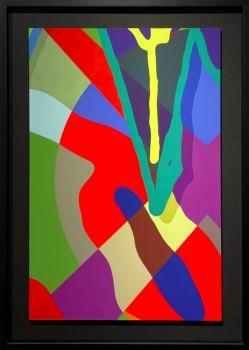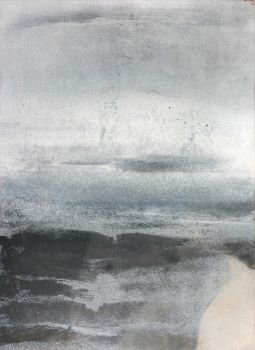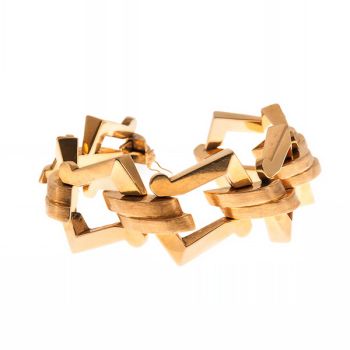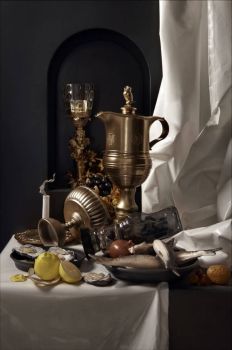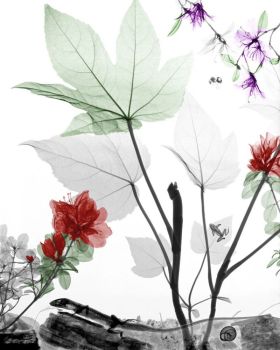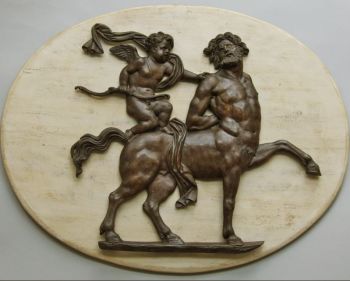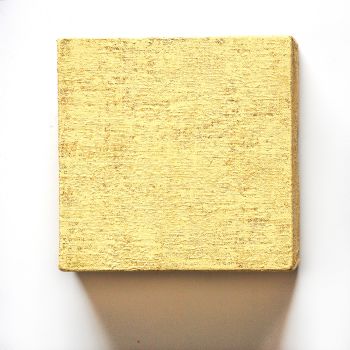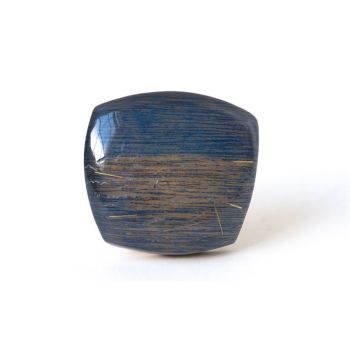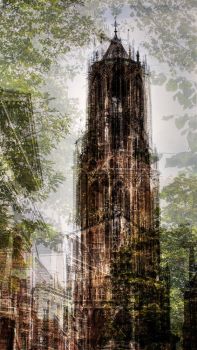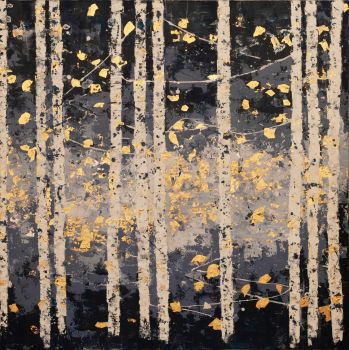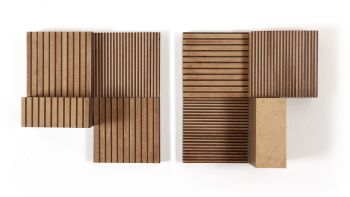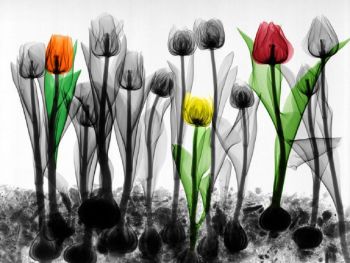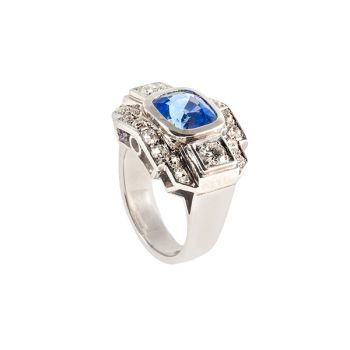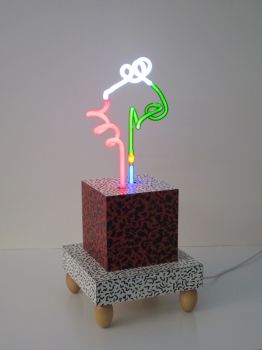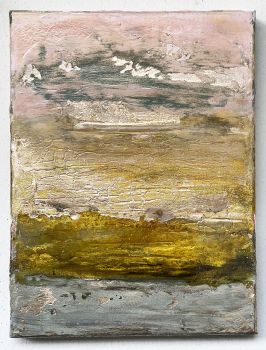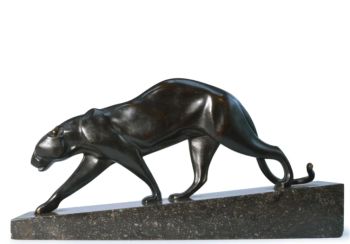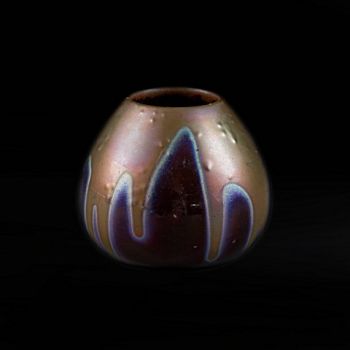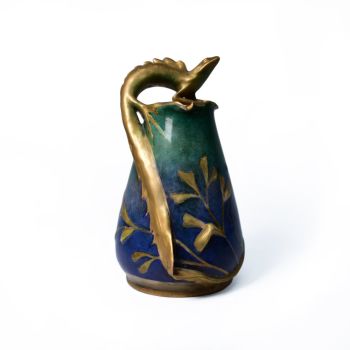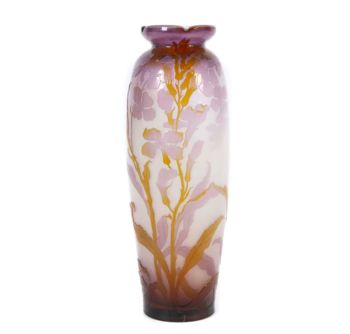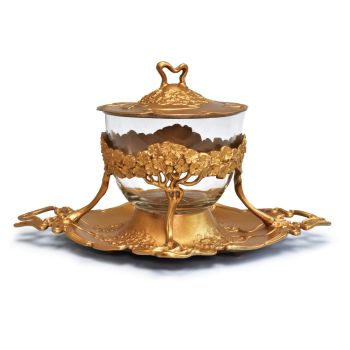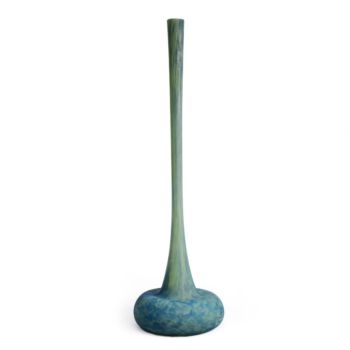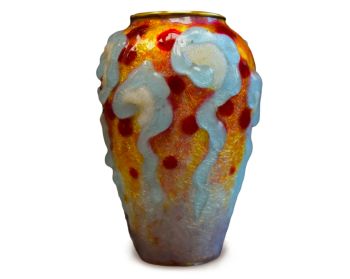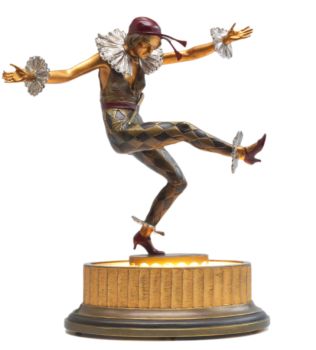WERKSTÄTTEN GEORG HULBE 1895
HANS CHRISTIANSEN
WoodGoldPhotographic printSilverprintLeather
200 ⨯ 150 ⨯ 2 cm
€ 12.500
Het Ware Huis
- About the artworkWERKSTÄTTEN GEORG HULBE/ HANS CHRISTIANSEN
Seerosen paravent1895, Germany
Fantastisch kamerscherm van George Hulbe, naar een ontwerp van Hans Christiansen. Zie ook de afbeelding van het kleine kamerscherm van Christiansen dat zich bevind in de collectie van het Bröhan museum in Berlijn. De techniek van het gedreven en gepolychromeerd leder kennen we van de goudleer wandbekleding uit de gouden eeuw. We zien in het ontwerp dat de inspiratie gehaald is in de Chinese kunst, zoals dat bij vooruitstrevende kunstenaars aan het eind van de negentiende eeuw in trek was. Er wordt geen gebruik gemaakt van perspectief, en er is een combinatie van abstracte decoratieve elementen en realistische elementen. De waterlelie of lotus is een symbool voor de verlichting. De maagdelijk witte bloem die aan de oppervlakte komt en het licht weerkaatst vind haar wortels immers in de donkere drab in de diepte van de poel. Er is gebruik gemaakt van goud en zilverfolie. Zeer zeldzaam kunstwerk in uitstekende staat. - About the artist
Hans Christiansen (1866-1945) was a German painter and illustrator and a main contributor to the Jugendstil/art nouveau movement. Early on, he took an apprenticeship as a decorative painter in Flensburg from 1881 to 1885 and then enrolled in the School of Applied Arts in Munich in 1888. After a study trip to Italy in 1889, he moved to Hamburg where he taught at a technical college. At the same time he worked as a freelance decorative painter and actively contributed to the “Volkskunst-Verein”, trying to bring about a reform based on the model of the Arts-and-Crafts movement.
In 1895 he gave up his job and went via Antwerp to Paris to study at the “Academie Julian” from 1896 to 1899. In 1899 he was appointed Grand Duke Ernst Ludwig of Hesse in the Darmstadt artists' colony on the Mathildenhöhe in Darmstadt for which, alongside Joseph Olbrich and Peter Behrens, he designed furniture, ceramics, tapestries and stained glass and graphic posters.He also designed his own house in the colony which he named “Villa Rose” later was sadly destroyed in World War.During this time, Christiansen was also a regular contributor to the magazine Jugend producing numerous illustrations and covers.
From 1902 he settled in Paris where he worked as a painter and from 1911 on learned at the School of Applied Arts in Wiesbaden.From 1933, his work was banned by the Nazi party because of his Jewish wife and was largely forgotten until his death in 1945.
Are you interested in buying this artwork?
Artwork details
Related artworks
Frères Daum
Daum Nancy – “Paysage Soleil Couchant” vase with two applied handles1900 - 1910
Price on requestAntiques Emporium
Johann Loetz (Lötz) Witwe Klostermühle
Johann Loetz Witwe – Jugendstil Cobalt Papillon vaas1900 - 1910
Price on requestAntiques Emporium
1 - 4 / 24Børge Mogensen
Teak wood “dropleaf” desk – Søborg Møbler, Denmark circa 19551950 - 1960
Price on requestVan Kerkhoff Art
Unknown artist
A Dutch colonial Indonesian betel box with gold mounts1750 - 1800
Price on requestZebregs & Röell - Fine Art - Antiques
Unknown artist
A rare Japanese export lacquer medical instrument box1650 - 1700
Price on requestZebregs & Röell - Fine Art - Antiques
1 - 4 / 24Unknown artist
A RARE COMPLETE INDIAN SADELI INLAID WORK AND WRITING BOX1800 - 1850
Price on requestZebregs & Röell - Fine Art - Antiques
Unknown artist
Retro ring in platinum set with diamonds and a sapphire1940 - 1950
Price on requestLyppens Juweliers
1 - 4 / 24- 1 - 4 / 12








